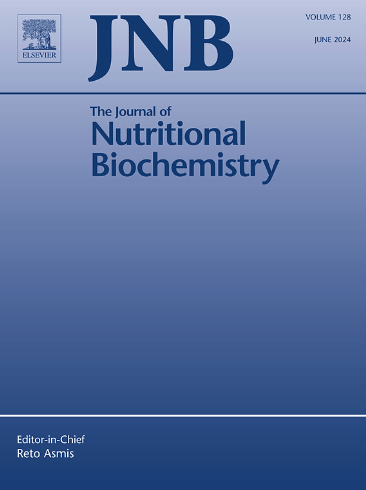Blood methylation signatures in childhood obesity and risk of cardiac hypertrophy in young adults: Findings from the BCAMS study and Mendelian randomization analysis
IF 4.8
2区 医学
Q1 BIOCHEMISTRY & MOLECULAR BIOLOGY
引用次数: 0
Abstract
Childhood obesity may induce epigenetic changes, affecting long-term cardiac health. However, empirical evidence remains scarce. Leveraging the prospective cohort of Beijing Child and Adolescent Metabolic Syndrome study (BCAMS), we investigated the blood DNA methylation signatures associated with childhood obesity and the future risk of cardiac hypertrophy in young adults, confirming causality with Mendelian randomization (MR). The BCAMS study followed children into adulthood. Data including blood DNA methylation profiles, along with lifestyles, blood levels of 7 adipokines and 32 amino acids were collected at baseline. Echocardiographic measurements were assessed at the 10-year follow-up. Enrichment and correlation analyses were performed, and two-sample MR analyses involving 105,268 participants from European biobanks were employed to infer causality. Cross-sectionally, we identified 376 differentially methylated sites between children with obesity and normal-weight controls (n=25), particularly within genes enriched in the cardiomyopathy pathway. Longitudinally, 11 childhood obesity-associated methylation sites, especially cg25835058 (KAZN), cg01362389 (TDH) and cg12099423 (SLC17A9), showed strong correlations with left ventricular index (LVMI) at the 10-year follow-up (P<.0017). Additionally, these sites were associated with traditional risk factors, notably glutamine, which displayed strongest protective association with LVMI (−1.72g/m2.7 per 1SD increase, P<.001) when validated with the entire cohort (n=326). MR analysis confirmed the significant correlation between cg12099423 methylation levels and SLC17A9 expression, and the causality between gene expression levels (KAZN, TDH, SLC17A9) and LVMI. Methylation associated with childhood obesity, particularly SLC17A9, may function as an epigenetic mechanism impacting long-term cardiac health later in life, emphasizing the significance of early intervention.

儿童肥胖和年轻人心脏肥厚风险的血液甲基化特征:来自BCAMS研究和孟德尔随机化分析的发现
背景:儿童肥胖可能诱发表观遗传变化,影响长期心脏健康。然而,经验证据仍然很少。利用北京儿童和青少年代谢综合征研究(BCAMS)的前瞻性队列,我们研究了与儿童肥胖和年轻人心脏肥厚未来风险相关的血液DNA甲基化特征,证实了孟德尔随机化(MR)的因果关系。方法:BCAMS研究跟踪儿童至成年。数据包括血液DNA甲基化谱、生活方式、7种脂肪因子和32种氨基酸的血液水平。在10年随访中评估超声心动图测量结果。进行了富集和相关性分析,并采用来自欧洲生物库的105,268名参与者的双样本MR分析来推断因果关系。结果:横断面分析,我们确定了肥胖儿童和正常体重对照儿童(n=25)之间的376个差异甲基化位点,特别是在心肌病途径中富集的基因中。纵向上,11个儿童期肥胖相关甲基化位点,特别是cg25835058 (KAZN)、cg01362389 (TDH)和cg12099423 (SLC17A9),在10年随访中显示与左心室指数(LVMI)有较强的相关性(每增加1SD p 2.7)。结论:儿童期肥胖相关甲基化,特别是SLC17A9,可能作为一种表观遗传机制影响以后的长期心脏健康,强调早期干预的意义。
本文章由计算机程序翻译,如有差异,请以英文原文为准。
求助全文
约1分钟内获得全文
求助全文
来源期刊

Journal of Nutritional Biochemistry
医学-生化与分子生物学
CiteScore
9.50
自引率
3.60%
发文量
237
审稿时长
68 days
期刊介绍:
Devoted to advancements in nutritional sciences, The Journal of Nutritional Biochemistry presents experimental nutrition research as it relates to: biochemistry, molecular biology, toxicology, or physiology.
Rigorous reviews by an international editorial board of distinguished scientists ensure publication of the most current and key research being conducted in nutrition at the cellular, animal and human level. In addition to its monthly features of critical reviews and research articles, The Journal of Nutritional Biochemistry also periodically publishes emerging issues, experimental methods, and other types of articles.
 求助内容:
求助内容: 应助结果提醒方式:
应助结果提醒方式:


